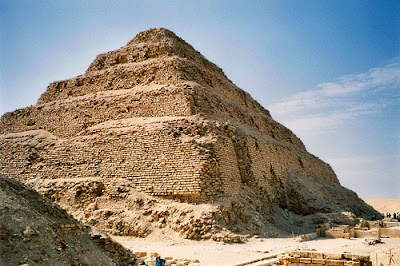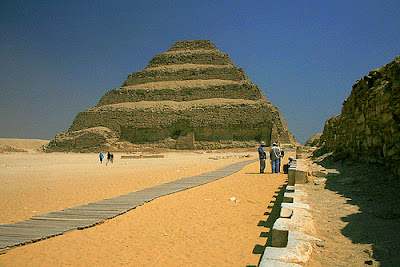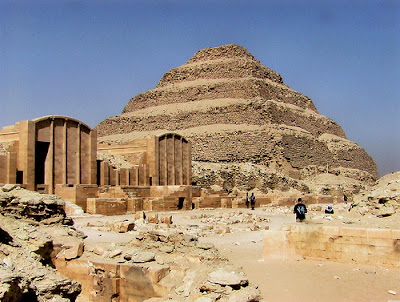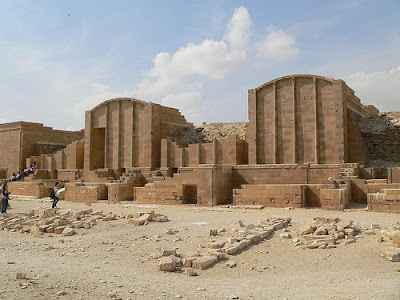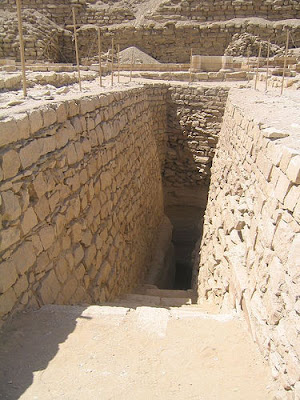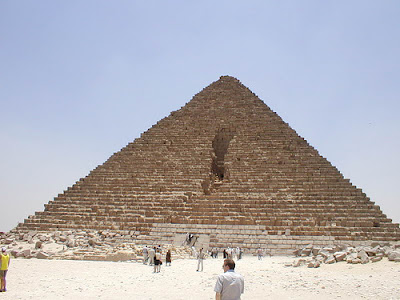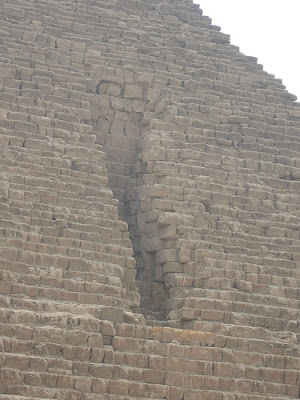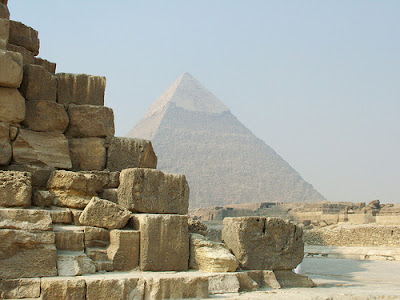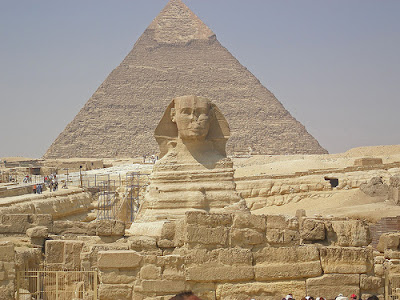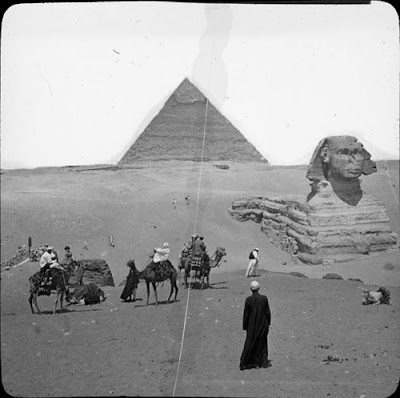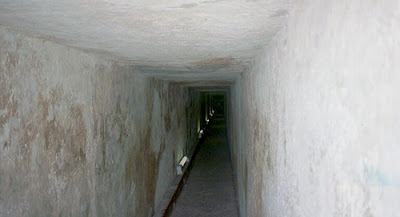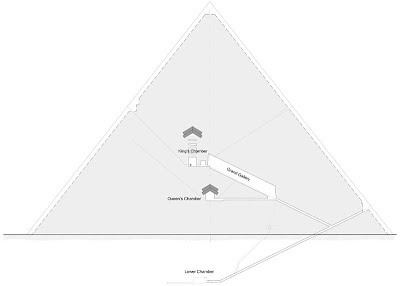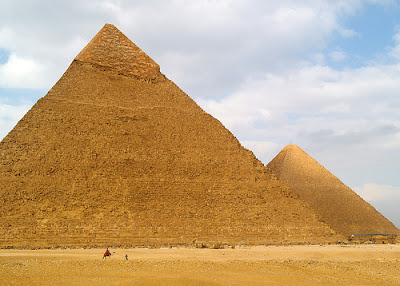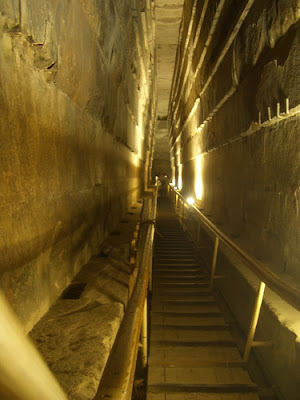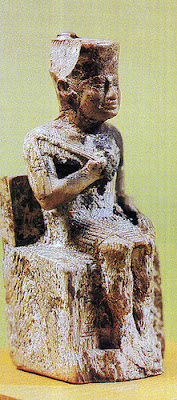I will be uploading next photos I can gather of Saqqara. Here is a summary of Saqqara and it's sites from Wikipedia:BRIEF NOTESWhile
Memphis was the capital of
Ancient Egypt, Saqqara served as its
necropolis. Although it was eclipsed as the burial ground of royalty by
Giza and later by the
Valley of the Kings in
Thebes, it remained an important complex for minor burials and cult ceremonies for more than 3,000 years, well into
Ptolemaic and
Roman times. The step pyramid at Saqqara was designed by
Imhotep for King
Djoser (c.2667-2648 BC). It is the oldest complete hewn-stone building complex known in history. It is also the location of the newly opened (in
2006)
Imhotep Museum.
History
Early DynasticView of Saqqara necropolis, including
Djoser's
step pyramid (centre). The mound to the far left is the Pyramid of Unas; the one on the right is the Pyramid of Userkaf.
Although the earliest burials of nobles at Saqqara can be traced back to the
First Dynasty, it was not until the
Second Dynasty that the first kings were buried there, including
Hotepsekhemwy and
Nynetjer.
Old Kingdom
The most striking feature of the necropolis, however, dates from the
Third Dynasty. Still visible today, is the
Step Pyramid of the
Pharaoh Djoser. In addition to Djoser's, there are another 16
pyramids on the site, in various states of preservation or dilapidation. That of the fifth-dynasty Pharaoh
Unas, located just to the south of the step pyramid and on top of Hotepsekhemwi's tomb, houses the earliest known example of the Pyramid Texts – inscriptions with instructions for the afterlife used to decorate the interior of tombs, the precursor of the
New Kingdom Book of the Dead. Saqqara is also home to an impressive number of
mastaba tombs. Because the necropolis was lost beneath the sands for much of the past two millennia – even the sizable mortuary complex surrounding Djoser's pyramid was not uncovered until
1924 – many of these have been superbly preserved, with both their structures and lavish internal decorations intact.
Major Old Kingdom structures
Gisr el-mudir this massive enclosure may date from the
Early Dynastic period.
Sekhemkhet's Step Pyramid (the
Buried Pyramid)
Step Pyramid of
Netjerikhet DjoserShepseskaf's
Mastabat Fara'unUserkaf's
pyramid, now looking like a conical hill.
Djedkare Isesi pyramid complex, known as
Haram el-Shawaf.
Unas pyramid complex, now mainly collapsed.
Teti's
pyramid complex, looking more like a small hill, rather than a man-made construction.
Pepi I complex, with its associated queens pyramids.
Merenre's complex
Pepi II, last great pyramid built in the
Old Kingdom.
Ibi, built in the
Eighth dynasty, it is now almost totally destroyed.
There are a few pyramids that date from the
First Intermediate Period, the most notable being
Khendjer's
Pyramid in South Saqqara.
New Kingdom NecropolisWhile most of the mastabas date from the
Old Kingdom, one major figure from the New Kingdom is also represented:
Horemheb, the last pharaoh of the
18th Dynasty, who had a tomb built here for himself before he assumed the throne in his own right, while still serving as one of
Tutankhamun's generals. However, it should be noted that Pharaoh Horemheb was never buried here. After his death he was interred, as were many other 18th Dynasty kings, in the
Valley of the Kings in Ancient
Thebes.
Later Burials and MonumentsAnother major monument at Saqqara is the
Serapeum: a gallery of tombs, cut from the rock, which served as the eternal resting place of the mummified bodies of the
Apis bulls worshipped in Memphis as embodiments of the god
Ptah. Rediscovered by
Auguste Mariette in
1851, the tombs had been opened and plundered in antiquity – with the exception of one that lay undisturbed for some 3,700 years. The mummified bull it contained can now be seen in Cairo's agricultural museum.
On the approach to the Serapeum stands the slightly incongruous arrangement of statues known the Philosophers' Circle: a Ptolemaic recognition of the greatest poets and thinkers of their
Greek ancestors, originally situated in a nearby temple. Represented here are
Hesiod,
Homer,
Pindar,
Plato, and others.

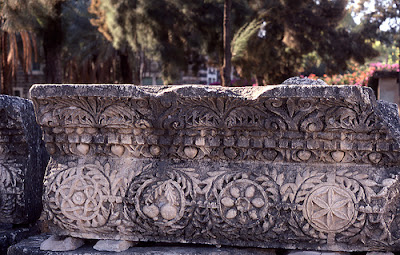
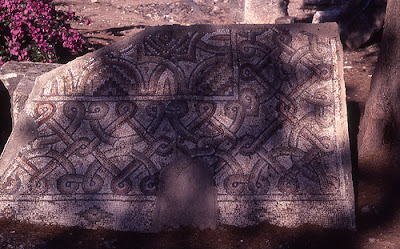

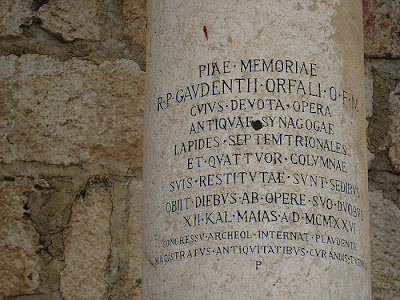
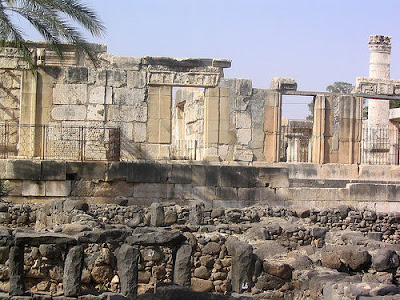
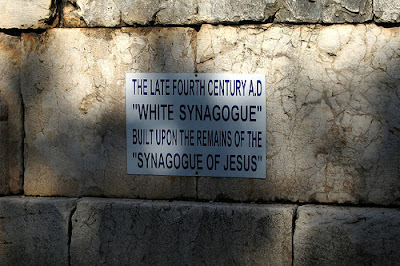
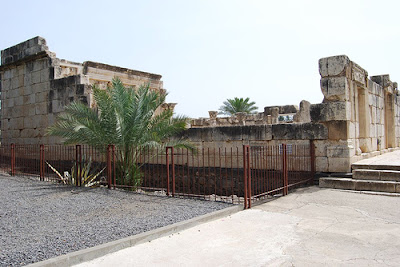
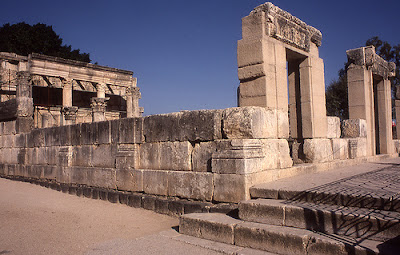
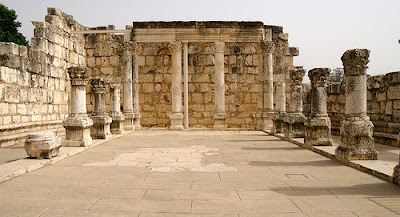


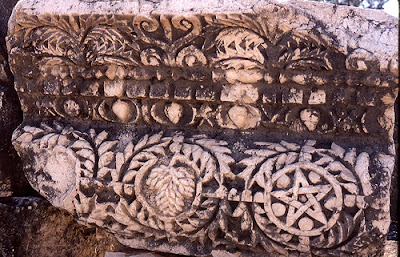
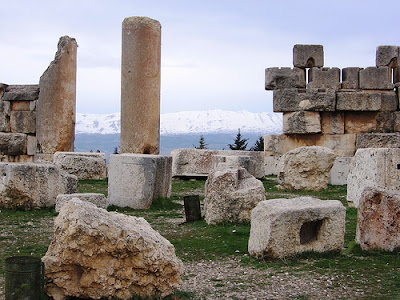 Entry to the Temple of Bacchus
Entry to the Temple of Bacchus Exterior of the temple of Bacchus
Exterior of the temple of Bacchus.jpg) Credit:
Credit: .jpg) Credit:
Credit: 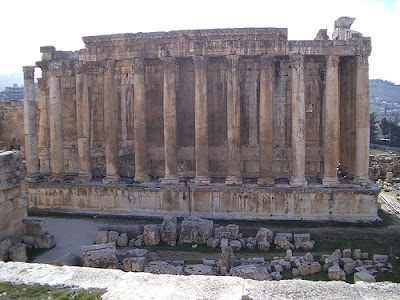
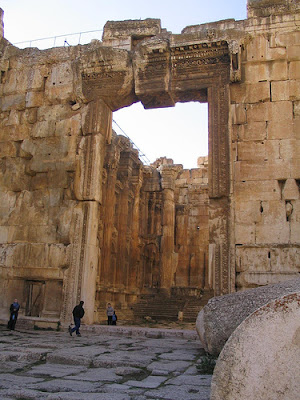
.jpg) Credit:
Credit: .jpg)
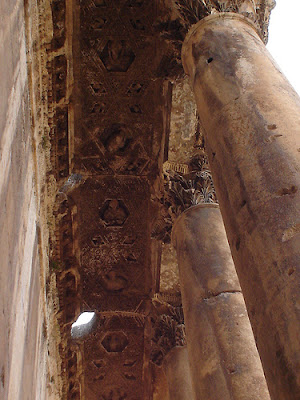 Credit:
Credit: .jpg)
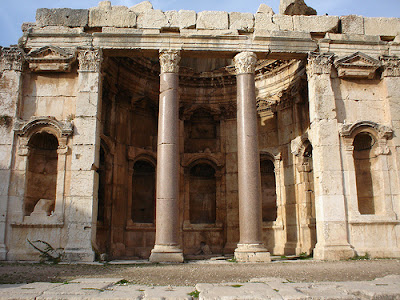

.jpg)
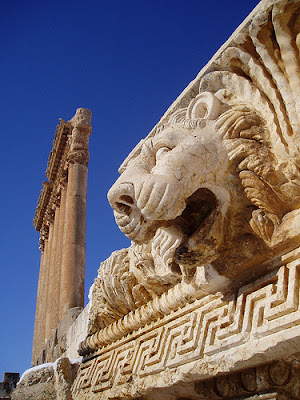

.jpg)
.jpg)
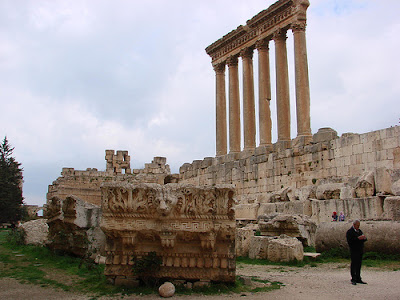
 Credit:
Credit: 